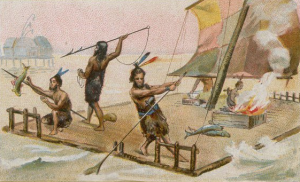It was a few years ago that a Greek-American archaeological team made a startling discovery – they found the oldest indications of seafaring and navigation in the world, in an area called Plakia on Crete Island in Greece. It is an incredibly important discovery that is given little attention, despite the fact that it reached the top ten discoveries of 2010. Their research is forcing scholars to rethink the maritime capabilities of early human and pre-human cultures.
The team of archaeologists were carrying out excavations in a gorge on the island of Crete when they discovered a Palaeolithic site in the canyon of Preveli, where more than 30 hand axes and hundreds of other stone tools, such as cleavers and scrapers, made from quartz were found scattered across more than 20 different locations. Until this discovery, it was believed that ancient humans reached Crete, Cyprus, a few other Greek islands, and possibly Sardinia, no earlier than 12,000 years ago. However, remarkably, the stone tools found at Parkia were dated to at least 130,000 years old.
more at ancient-origins.net




